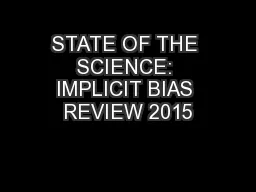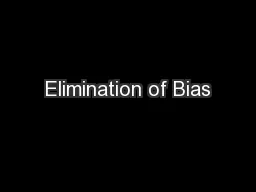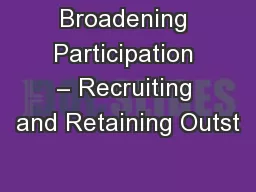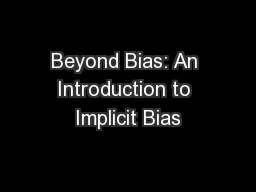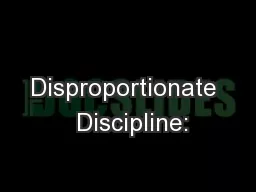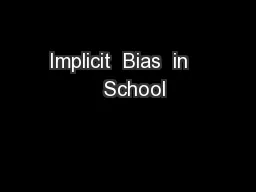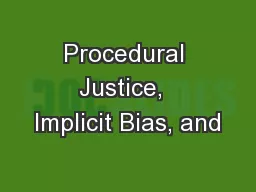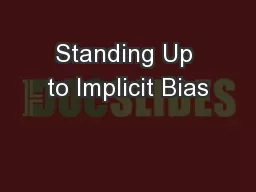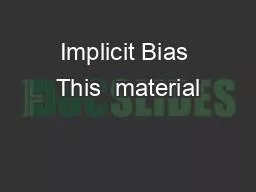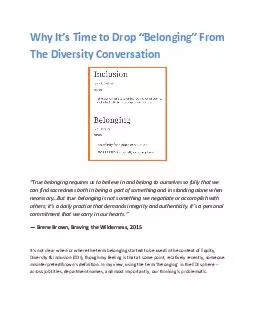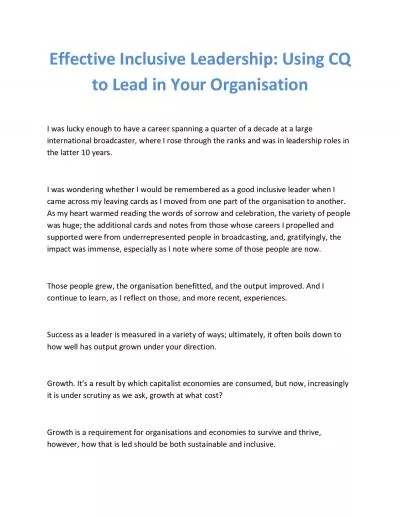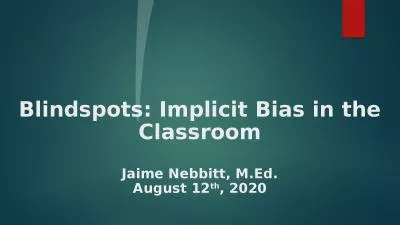PDF-STATE OF THE SCIENCE: IMPLICIT BIAS REVIEW 2015
Author : pasty-toler | Published Date : 2016-10-16
IMPLICIT BIAS As a universitywide interdisciplinary research institute the Kirwan Institute for the Study of Race and Ethnicity works to deepen understanding of
Presentation Embed Code
Download Presentation
Download Presentation The PPT/PDF document "STATE OF THE SCIENCE: IMPLICIT BIAS REVI..." is the property of its rightful owner. Permission is granted to download and print the materials on this website for personal, non-commercial use only, and to display it on your personal computer provided you do not modify the materials and that you retain all copyright notices contained in the materials. By downloading content from our website, you accept the terms of this agreement.
STATE OF THE SCIENCE: IMPLICIT BIAS REVIEW 2015: Transcript
Download Rules Of Document
"STATE OF THE SCIENCE: IMPLICIT BIAS REVIEW 2015"The content belongs to its owner. You may download and print it for personal use, without modification, and keep all copyright notices. By downloading, you agree to these terms.
Related Documents

